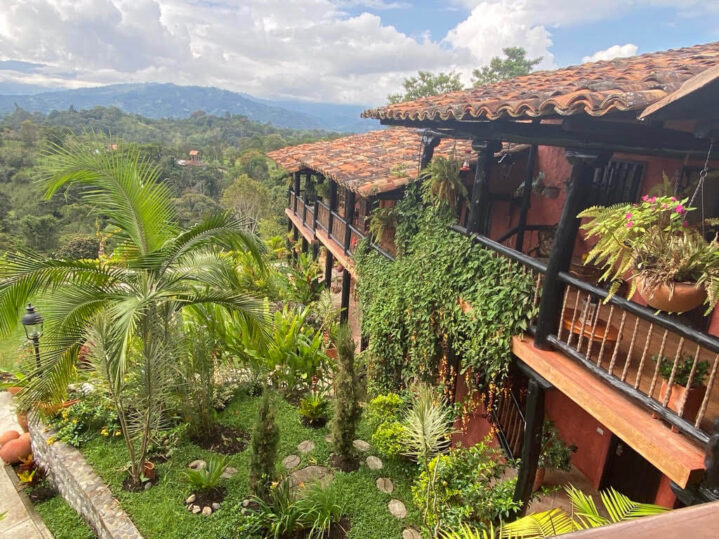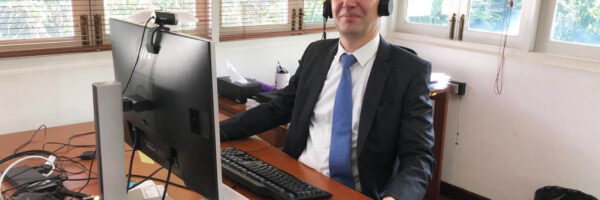
Travelling throughout Colombia in the times of Covid
One of the most popular Ambassadorial couples to have served their country in Thailand over recent years were Andelfo and Astrid Garcia from Colombia. They were here for more than six years but touched the heart of many with their warm embrace, exciting and convivial company. Expat Life caught up with them back in the Americas now and managed to persuade Astrid to share their recent travels with us.
After having the privilege of living almost six wonderful years in Thailand, as Colombian ambassadors to the wonderful kingdom, we both retired and began a tour for several countries, and on that journey, we returned to visit Colombia in January 2020.
We had an invitation to attend the Barranquilla Carnival along with some friends to continue travelling throughout the Caribbean region and then return to Bogota, to attend a wedding on March 11, and back to California, but on March 13 Colombia when many countries closed their international borders because of Covid 19, something unheard was going to change everybody’s life.
We then spent five months in Bogota, confined, reading, writing, Netflix, experimenting with our cooking abilities, and ‘Zooming’ with friends. We had time to work on many interesting projects that had been buried in our computers for years. The truth is, that it was a productive special time. Finally in August, Colombia opened local roads and we decided we had to reinvent our plans and since Colombia is enjoying the fruits of the peace process and the agreements of 2016, we decided that since we were in Colombia, we needed to organise ‘Covid code’ trips to explore Colombia by road. We did not use hotels, we used Airbnb to search and rent houses for a month in each region and from there we will go to the nearby towns using masks and with all the precautions recommended by the authorities. We will only attend open air restaurants for lunch, most restaurants anyway are working just by reservation, breakfast and dinner would be at home. We are lucky that everything had worked perfectly and we continued devouring roads, collecting experiences, and visiting pre-empty towns.
As a traveller always chasing places recognised for their cultural or natural value by UNESCO, as World Heritage Sites (WHS), this was a great opportunity to visit or revisit some of Colombia’s nine recognised UNESCO WHS. They were Cartagena, Santa Cruz de Mompox, The Coffee Cultural Landscape, San Agustin Archaeological Park, Tierradentro, Chiribiquete National Park, Los Katios National Park, Malpelo Fauna, and Flora Sanctuary, and the Tatacoa Desert (in the approval process). We will see how many we could visit before it is safe to return to the USA.
Going back to our story, before Covid, we went to Barranquilla, a city located on the coast of the Caribbean Sea. The Barranquilla Carnival was wonderful, well organised, it lasted for several days with music, dance, costumes, lights colours, and flavours. It was also a good pretext to get together with lovely long term friends. After this wonderful carnival, we rented a car and headed South following the course of the main river in Colombia, the Magdalena River that crosses the country from South to North. Our main purpose in this road trip was to visit Santa Cruz de Mompox (WHS). This is a beautiful city of historical value, founded in 1537 on the banks of the river, a treasure that preserves intact the best Spanish colonial architecture, with its churches, its cobbled streets, and it’s Caribbean flavour closely associated with the river.
Mompox was for many years the prime centre of gold and silversmithing being world recognised for its ancestral handmade Filigree Jewellery. Mompox still has many small family owned shops. I bought stunning filigree jewellery for my three daughters in law, my granddaughter, my sister in law, my sister, and for me.
We continued our road trip heading to Cartagena, the Heroic, (UNESCO WHS), named like that because the city resisted many attacks from Spain when trying to retake control of their colony and also many attacks from pirates. Cartagena amused us with its wall surrounding the old city, its plazas, houses, museums, churches, restaurants, fashion and jewellery designer stores, nightlife and it’s warm people. After two wonderful weeks in Cartagena, we returned to Barranquilla to take our flight to Bogota to attend our friend’s wedding.
That weekend the news struck us all Covid-19 was hitting Colombia and Colombia closed international flights. Like everybody else in the world, we had to confine ourselves. After our 5 months confined in the capital city, Bogotá, in August, the government opened roads and we decided there will be many months more waiting for a vaccine and we should get out of the city.
So, we set off on our first ‘Covid code’ trip, it was to the Coffee Growing Region(WHS), to the provinces of Quindio and Risaralda. The region is a magical valley leaning on the central mountain range, one of the three mountain ranges of the Andean region of Colombia. This region is not only well known for the enchanting scenery of coffee farms but also for bird watching. Colombia occupies the first place in the world in a diversity of birds with almost 2,000 registered species, the coffee region has 35% of Colombian bird species. While in the region, we learned much about birds and we enjoy them every day, you could see them and hear their songs all day long from any place where you are.
Being an art lover and collector, and after hearing and watching birds every day, I sat with the native biologist and photographer Alejandro Grajales and selected from his hundreds of photos in his PC some photos to print a small collection of indigenous birds from their four subregions, and now they are exhibited at the house where our friends graciously lent us and we enjoyed for a month.
I will enumerate just a few things from the most picturesque towns we visited. In Salento, The Cocora Valley is stunning with hundreds of Wax Palms, some of the tallest palms in the world. The area has its own bird sanctuary. There we had the unique opportunity to see a condor flying just on top of us, it was very impressive. Another town is Pijao, which is surrounded by the most magical view of mountains, that we enjoy sitting at the Conrad Coffee place at the very top of the mountain. In Montenegro, you have The Paradise of Guadua and Bambu which is more impressive than the ones I have seen in other regions of the world. In Calarcá, the well kept Botanical Garden. Cartago is famous for exporting hand embroidery fashionable cloth, I bought lovely embroidered blouses for Christmas gifts.
After one month of travelling throughout small semi-empty towns, again we returned to Bogota more in love with Colombia’s nature and its people and once again departed this time to visit the province of Santander, located in the Northeast of Colombia, to settle in Barichara, another WHS.
Barichara is a city of cobbled streets and colonial architecture, in the heart of the town stands the Cathedral made of sandstone with an altar adorned in gold. There are plenty of churches built in the 19th century. Each street has its own enchantment. You need to walk them all. All the streets are hill up or hill down, you will end with strong calves. At the top of the hill, it is the enchanting Bio-park, with many regional plants and a majestic view of mountains and the valley.
Again back to Bogota and then heading to visit the Southwest of Colombia, to San Agustín Archeological National Park (UNESCO WHS). The Park preserves hundreds of pre-Columbian statues, tombs, and utensils from hundred of years before the arrival of the Spaniards conquistadors of America. The area is nestled in the Andes mountain range. San Agustín calls us for a reflection of the greatness of its original inhabitants and the enormous development and sophistication of their ancestral culture.
During that trip we discovered Villa Nueva, it was not in our plans, not even on the map. It is an undisclosed perfect small town paradise. Each house has a lovely front with plants and trees that provide shade. It has a cultural life of its own, the only school frames the plaza, revealing its importance. A well recognised national sculptor, Emiro Garzon made this town his paradise and has an incredible art internship programme for kids and soldiers from the army. All this happens without police or a mayor. The community has its own rules. Their inhabitants believe in their culture and in respecting each other.
We continue to the Tatacoa Desert (pending WHS) known for its ochre, grey and red sand dunes, and for being a perfect spot for star observers. It offers you every night an open sky spectacle of stars and constellations. We were lucky as a well known astronomer was there and gave us that very night a presentation and shared with us his powerful telescopes.
















